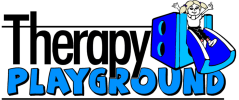We hope everyone is safe and healthy during this time. With the “Stay at Home” orders and the announcement of schools remaining closed until May 15th, 2020, we will be following suit. This means that our physical office will remain closed until May 18th, 2020. However, our virtual office is open and ready for clients. We are already seeing many of you for ongoing services, but we would like to encourage everyone to take advantage of this time to help bridge the gap that has unprecedently formed between therapists and families. Treatment will be different, but just as beneficial. This is a great opportunity to increase parent communication and education. I know our therapists often get a chance to talk about what takes place at home and under our present circumstances, it appears we will have many opportunities to actively work in real time.
Why use Telehealth?
Treating a child in their own environment provides valuable information to the clinician on concerns not seen at the clinic setting.
Parents are given the opportunity to participate and learn from the treatment sessions, giving them the tools needed to address issues that impact their child and other members of the family.
Engagement: By utilizing fun and engaging digital technology, teletherapy is exceptionally kid friendly. Today’s children are comfortable with computers and love game-based activities such as video interactions and digital learning. In this rapidly developing technological world of ours, the digital dimensions of online therapy have become very natural and almost expected.
CONSISTENCY– Allow children to retain learned skills and continue progression towards their goals.
Relaxed- For shy and more reserved children, teletherapy is less intimidating than traditional face to face therapy.
What does a PT session look like?
• You may receive a text or email from your therapist with suggested items for use during therapy session
• Greet family/review challenges and successes since last session
• Targeted goal-related activity (jumping skills, coordination skills, balance, directing caregivers through facilitating developmental positioning and gross motor skills)
• Wrap Up- Parent education on home program and provide suggestions on what activities to focus on during the week
What does an OT session look like?
• Greet family/review challenges and successes since last session
• Gross Motor/Fine Motor warm-up (crab walks, bear walks, jumping jacks, putty, playdough)
• Targeted goal- related activity (ADL, motor planning, self-regulation, executive functioning, handwriting, visual-motor)
• Wrap up- Parent education on home programs and carryover of what was learned in the session.
What does a Speech session look like?
• You may receive an email from your therapist with suggested material to have on hand.
• When the session begins: Greet family/catch up- explain the plan for the day and what they will need help with.
• Engage in activities as a group (parent/care giver and child/therapist). This may include, but not limited to playing with toys on your end or therapist’s end.
• Wrap up- Parent education on home programs and carryover of what was learned in the session.
What materials are needed?
• ANYTHING you have at home: We are experts at being creative.
• Blankets
• Pillows
• Couch Cushions
• Playdough
• Markers
• Crayons
• Laundry Baskets
• Games
• Books
• Toys
What about insurance coverage?
Everything is changing on a daily basis. We are finding that most plans are covering services and for the most part, copays are still due. This includes many of those that last week were not covered. We are checking with insurance’s daily to get new updates and will continue to reach out to parents affected by those changes.
If you have any questions or concerns, please feel free to call us at 910-423-5622 or your therapists directly.
Thank you and we hope to see you all soon!
CDC Recommendations:
Avoid close contact
- Avoid close contact with people who are sick
- Put distance between yourself and other people if COVID-19 is spreading in your community. This is especially important for people who are at higher risk of getting very sick.
Clean your hands often
- Wash your hands often with soap and water for at least 20 seconds especially after you have been in a public place, or after blowing your nose, coughing, or sneezing.
- If soap and water are not readily available, use a hand sanitizer that contains at least 60% alcohol. Cover all surfaces of your hands and rub them together until they feel dry.
- Avoid touching your eyes, nose, and mouth with unwashed hands.
